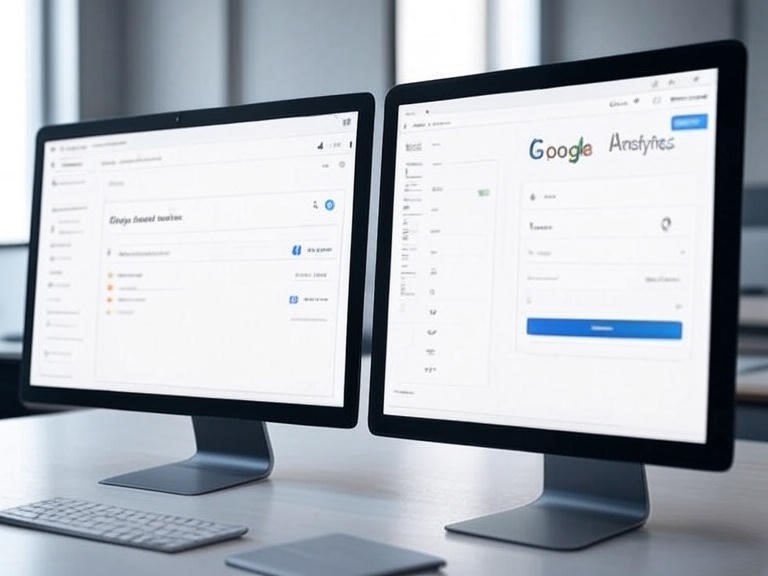
Table of Contents
Introduction
Organic search visibility is a critical metric for any website aiming to attract traffic, build brand authority, and drive conversions without relying solely on paid advertising. As search engines like Google, Bing, and others continue to evolve, understanding and optimizing organic search visibility has become a cornerstone of digital marketing strategies.
This blog post will dive deep into what organic search visibility is, why it matters, how to measure it effectively, and actionable strategies to improve it. Along the way, we’ll include tables, charts, and practical insights to help you navigate this essential aspect of SEO.
What is Organic Search Visibility?
Organic search visibility refers to how prominently and frequently a website appears in the unpaid (organic) search results of search engines for relevant queries. It’s a measure of how well your website ranks for keywords and phrases that your target audience is searching for. Unlike paid search results, which rely on advertising budgets, organic search visibility is driven by search engine optimization (SEO) efforts, content quality, and technical website performance.
Why Organic Search Visibility Matters
Organic search remains one of the most cost-effective ways to drive consistent, high-quality traffic to your website. According to a 2023 study by BrightEdge, organic search accounts for approximately 53% of all website traffic, far surpassing paid search (15%) and social media (5%).
High organic visibility means your website is more likely to attract users who are actively searching for solutions, products, or information you offer, leading to higher engagement and conversion rates.
Here’s why organic search visibility is crucial:
- Cost Efficiency: Organic traffic is essentially free, requiring investment in SEO rather than ongoing ad spend.
- Long-Term Value: Well-optimized content can rank for years, providing sustained traffic.
- Trust and Credibility: Users tend to trust organic results more than paid ads, as they perceive them as more authoritative.
- Scalability: As your visibility improves, you can target a broader range of keywords and audiences.
How to Measure Organic Search Visibility
Measuring organic search visibility involves tracking how often and prominently your website appears in search engine results pages (SERPs) for targeted keywords. Several tools and metrics can help quantify this visibility. Below, we outline the key methods and tools, along with a step-by-step approach to measurement.
Key Metrics for Measuring Organic Search Visibility
- Search Impression Share: The percentage of times your website appears in search results for a given set of keywords compared to the total possible impressions.
- Keyword Rankings: The positions your website holds for specific keywords in SERPs.
- Organic Click-Through Rate (CTR): The percentage of users who click on your website’s organic listing after seeing it in search results.
- Organic Traffic: The total number of visitors arriving at your website via organic search.
- Domain Authority (DA): A metric (developed by Moz) that predicts how likely a website is to rank on SERPs based on its backlink profile and other factors.
- SERP Feature Presence: The frequency with which your website appears in special SERP features like featured snippets, knowledge panels, or local packs.
Key Factors Influencing Organic Search Visibility
- Several elements impact a website’s organic visibility:
- Keyword Rankings: Higher rankings for relevant keywords increase visibility.
- Search Volume: Keywords with higher search volumes contribute more to visibility.
- Click-Through Rate (CTR): The percentage of users clicking on a result depends on position, title, and meta description.
- Content Quality: Relevant, high-quality content aligns with user intent.
- Technical SEO: Site speed, mobile-friendliness, and crawlability affect rankings.
- Backlinks: Authoritative backlinks signal trust to search engines.
Tools for Measuring Organic Search Visibility
Several tools can help you track and analyze your organic search visibility. Here’s a comparison of popular options:
| Tool | Key Features | Best For | Cost |
|---|---|---|---|
| Google Search Console | Tracks impressions, clicks, CTR, and keyword rankings; free to use | Beginners, small businesses | Free |
| SEMrush | Keyword tracking, competitor analysis, site audits, and SERP feature tracking | Agencies, mid-to-large businesses | Starts at $129.95/month |
| Ahrefs | Backlink analysis, keyword research, rank tracking, and content gap analysis | SEO professionals, content marketers | Starts at $99/month |
| Moz Pro | Domain Authority tracking, keyword research, and on-page optimization suggestions | Small businesses, SEO beginners | Starts at $99/month |
| Sistrix | Visibility Index for tracking organic performance across markets | Enterprises, international SEO | Custom pricing |
Step-by-Step Guide to Measuring Organic Search Visibility
Set Up Google Search Console:
- Connect your website to Google Search Console to access data on impressions, clicks, and keyword performance.
- Use the Performance Report to view your average position, CTR, and total impressions for specific queries.
Track Keyword Rankings:
- Use tools like SEMrush or Ahrefs to monitor your rankings for target keywords.
- Focus on high-value keywords relevant to your business goals.
Calculate Your Visibility Score:
- Tools like Sistrix provide a Visibility Index, which aggregates your rankings across thousands of keywords to give a single score.
- Alternatively, calculate a manual visibility score by assigning weights to keyword rankings (e.g., 100% for position 1, 90% for position 2, etc.) and averaging them.
Monitor Organic Traffic:
- Use Google Analytics to track the number of users arriving via organic search.
- Segment traffic by landing page to identify which pages drive the most visibility.
Analyze SERP Features:
- Check if your website appears in featured snippets, local packs, or other SERP features using tools like SEMrush or Ahrefs.
Visualizing Organic Search Visibility
To better understand your performance, visualize your data using charts. Below is an example of how you might track organic visibility over time using a line chart:
Chart: Organic Search Visibility Over Time
This chart shows a steady increase in visibility, likely due to consistent SEO efforts. Tools like Google Data Studio or Excel can help create similar visualizations.
How to Improve Organic Search Visibility
Improving organic search visibility requires a multi-faceted approach that combines technical SEO, content optimization, link building, and user experience enhancements. Below, we outline actionable strategies to boost your visibility, supported by data and examples.
1. Conduct Comprehensive Keyword Research

Keyword research is the foundation of organic search visibility. Identify keywords that align with your audience’s search intent and have a balance of high search volume and low competition.
- Tools: Use SEMrush, Ahrefs, or Google Keyword Planner to find relevant keywords.
- Strategy:
- Target long-tail keywords (e.g., “best running shoes for flat feet” instead of “running shoes”) to capture specific search intent.
- Analyze competitor keywords to identify gaps you can exploit.
- Group keywords by topic clusters to create comprehensive content hubs.
Example Keyword Research Table:
| Keyword | Search Volume | Keyword Difficulty | Intent |
|---|---|---|---|
| Best running shoes for flat feet | 12,000 | 45 | Commercial |
| Running shoes | 150,000 | 85 | Informational |
| How to choose running shoes | 8,000 | 30 | Informational |
2. Optimize On-Page SEO Elements
On-page SEO ensures that your website’s content and structure are search-engine-friendly. Key elements to optimize include:
- Title Tags: Keep them under 60 characters, include primary keywords, and make them compelling.
- Meta Descriptions: Write concise, keyword-rich descriptions (under 160 characters) to boost CTR.
- Headings (H1, H2, H3): Use a clear hierarchy with keywords in headings to improve readability and SEO.
- Content Quality: Create in-depth, valuable content that answers user queries comprehensively.
- Internal Linking: Link to related pages on your site to improve navigation and distribute link equity.
Checklist for On-Page SEO:
| Element | Optimization Tip | Impact on Visibility |
|---|---|---|
| Title Tag | Include primary keyword, keep under 60 chars | High |
| Meta Description | Use action-oriented language, include keywords | Medium |
| H1 Tag | One per page, keyword-focused | High |
| Content Length | Aim for 1,500+ words for in-depth topics | High |
| Internal Links | Link to 3-5 relevant pages per article | Medium |
3. Improve Technical SEO

Technical SEO ensures that search engines can crawl, index, and understand your website effectively. Key areas to focus on include:
- Site Speed: Use tools like Google PageSpeed Insights to optimize load times. Aim for a mobile load time under 3 seconds.
- Mobile-Friendliness: Ensure your site is responsive and passes Google’s Mobile-Friendly Test.
- XML Sitemap: Submit an updated sitemap to Google Search Console to aid crawling.
- Fix Broken Links: Use Ahrefs or Screaming Frog to identify and fix 404 errors.
- HTTPS: Secure your site with an SSL certificate to boost trust and rankings.
Chart: Impact of Technical SEO Fixes on Visibility
Technical SEO Improvement Chart
4. Build High-Quality Backlinks

Backlinks from authoritative websites signal to search engines that your content is trustworthy and relevant. According to a 2024 Ahrefs study, pages with more backlinks tend to rank higher in Google’s SERPs.
- Strategies:
- Create link-worthy content like infographics, case studies, or original research.
- Reach out to industry blogs for guest posting opportunities.
- Use tools like Ahrefs to identify and reclaim lost or broken backlinks.
- Leverage HARO (Help a Reporter Out) to earn backlinks from high-authority publications.
Example Backlink Profile Table:
| Referring Domain | Domain Authority | Link Type | Anchor Text |
|---|---|---|---|
| example.com | 85 | Editorial | “Best SEO Practices” |
| blogsite.org | 65 | Guest Post | “SEO Guide 2025” |
| newsoutlet.net | 90 | Mention | “Your Brand Name” |
5. Optimize for SERP Features
SERP features like featured snippets, People Also Ask (PAA) boxes, and local packs can significantly boost visibility. To optimize:
- Featured Snippets: Answer questions concisely in your content (e.g., use a 40-60 word paragraph for “definition” queries).
- PAA Boxes: Structure content with question-based subheadings (e.g., “What is organic search visibility?”).
- Local SEO: Optimize your Google Business Profile with accurate NAP (Name, Address, Phone) details for local searches.
6. Enhance User Experience (UX)
Improving organic search visibility requires a multi-faceted approach that combines technical SEO, content optimization, link building, and user experience enhancements.
Search engines prioritize websites that offer a great user experience. Key UX factors include:
- Dwell Time: Create engaging content to keep users on your site longer.
- Navigation: Ensure intuitive menus and clear calls-to-action.
- Core Web Vitals: Optimize for Largest Contentful Paint (LCP), First Input Delay (FID), and Cumulative Layout Shift (CLS).
7. Track and Iterate
SEO is an ongoing process. Regularly monitor your organic search visibility using the tools and metrics outlined above. Adjust your strategy based on performance data, algorithm updates, and competitor actions.
Sample Performance Tracking Table:
| Month | Visibility Score | Organic Traffic | Top Keyword Position | Action Taken |
|---|---|---|---|---|
| Jan 2025 | 25 | 10,000 | #5 | Optimized title tags |
| Mar 2025 | 32 | 12,500 | #3 | Added 5 new backlinks |
| Jul 2025 | 45 | 15,000 | #1 | Targeted featured snippets |
Common Challenges and Solutions
Improving organic search visibility isn’t without its hurdles. Here are some common challenges and how to address them:
| Challenge | Solution |
|---|---|
| Ranking for competitive keywords | Focus on long-tail keywords and niche topics to build authority gradually. |
| Algorithm updates | Stay informed via SEO blogs (e.g., Moz, Search Engine Journal) and adapt. |
| Low CTR despite high rankings | Optimize meta descriptions and titles for better click appeal. |
| Limited budget for SEO tools | Use free tools like Google Search Console and Ubersuggest for basic insights. |
Frequently Asked Questions (FAQs) on Organic Search Visibility
What is organic search visibility?
Organic search visibility refers to how often and prominently your website appears in the unpaid search results of search engines like Google for relevant keywords. It reflects your site’s ranking and discoverability based on SEO efforts rather than paid ads.
Why is organic search visibility important?
Organic search visibility drives cost-effective, high-quality traffic to your website. It builds trust with users, enhances long-term value through sustained rankings, and allows scalability to target broader audiences without ongoing ad spend.
How can I measure organic search visibility?
You can measure it using tools like Google Search Console (for impressions, clicks, and CTR), SEMrush or Ahrefs (for keyword rankings and backlink analysis), and Moz Pro (for Domain Authority). Track metrics like impression share, organic traffic, and SERP feature presence.
What tools are best for improving organic search visibility?
Popular tools include Google Search Console (free), SEMrush, Ahrefs, and Moz Pro. These help with keyword research, site audits, backlink tracking, and performance analysis to optimize your SEO strategy.
How long does it take to improve organic search visibility?
Improvement can take 3-6 months with consistent SEO efforts, depending on competition, content quality, and technical fixes. Long-term visibility often builds over a year as backlinks and authority grow.
What are some effective SEO strategies for boosting visibility?
Key strategies include conducting keyword research, optimizing on-page elements (titles, meta descriptions), improving technical SEO (site speed, mobile-friendliness), building high-quality backlinks, and targeting SERP features like featured snippets.
How do backlinks affect organic search visibility?
Backlinks from authoritative websites signal trust and relevance to search engines, boosting your rankings. Quality and quantity of backlinks can significantly enhance your site’s visibility over time.
Can I improve visibility without a big budget?
Yes, use free tools like Google Search Console and Ubersuggest, focus on high-quality content, optimize existing pages, and leverage local SEO or guest posting to build backlinks without significant costs.
What role does content play in organic search visibility?
High-quality, relevant, and comprehensive content (e.g., 1,500+ words) that answers user queries improves rankings and attracts organic traffic. Regularly updated content also signals freshness to search engines.
How often should I monitor my organic search visibility?
Monitor weekly or monthly using tools like Google Search Console or SEMrush to track progress. Adjust your strategy based on performance data, algorithm updates, and competitor insights.
Conclusion
Organic search visibility is a vital metric for any website looking to thrive in the digital landscape. By understanding what it is, measuring it with the right tools and metrics, and implementing a robust SEO strategy, you can significantly enhance your website’s presence in search results.
From keyword research and on-page optimization to technical SEO and backlink building, each step plays a crucial role in driving long-term, sustainable traffic.
Start by auditing your current visibility using tools like Google Search Console or SEMrush, then prioritize the strategies outlined above based on your website’s needs. Regularly track your progress with charts and tables to stay on top of performance trends.
With consistent effort and adaptation to search engine updates, your organic search visibility can become a powerful driver of growth and success.
Engaging your audience with valuable content is a key factor in building a strong online identity. Crafting materials that resonate with readers encourages interaction and fosters loyalty over time. This connection not only enhances your reputation but also supports long-term success in a crowded digital space.
Consistency in updating and refining your online strategy keeps it relevant and effective. Periodic adjustments based on feedback and industry shifts help maintain momentum. This ongoing commitment ensures your efforts remain impactful, allowing you to thrive amidst evolving trends.
Engaging your audience with valuable content is a key factor in building a strong online identity. Crafting materials that resonate with readers encourages interaction and fosters loyalty over time. This connection not only enhances your reputation but also supports long-term success in a crowded digital space.
Consistency in updating and refining your online strategy keeps it relevant and effective. Periodic adjustments based on feedback and industry shifts help maintain momentum. This ongoing commitment ensures your efforts remain impactful, allowing you to thrive amidst evolving trends.
Key Takeaways on Organic Search Visibility
- Definition and Importance: Organic search visibility measures how prominently your website ranks in unpaid search results, driving cost-effective, high-quality traffic and building long-term credibility.
- Measurement Tools: Use Google Search Console, SEMrush, Ahrefs, and Moz Pro to track metrics like impression share, keyword rankings, organic traffic, and Domain Authority.
- Effective Strategies: Boost visibility with keyword research, on-page SEO (titles, meta descriptions), technical optimization (site speed, mobile-friendliness), and high-quality backlinks.
- Timeframe: Improvements typically take 3-6 months, with sustained growth over a year through consistent efforts.
- Budget-Friendly Options: Leverage free tools and focus on content quality and local SEO to enhance visibility without significant costs.
- Content Role: High-quality, comprehensive content (1,500+ words) and regular updates are crucial for ranking higher and attracting organic traffic.
- Monitoring: Regularly check performance weekly or monthly, adapting strategies based on data and algorithm changes for optimal results.
- Definition and Importance: Organic search visibility measures how prominently your website ranks in unpaid search results, driving cost-effective, high-quality traffic and building long-term credibility.
- Measurement Tools: Use Google Search Console, SEMrush, Ahrefs, and Moz Pro to track metrics like impression share, keyword rankings, organic traffic, and Domain Authority.
- Effective Strategies: Boost visibility with keyword research, on-page SEO (titles, meta descriptions), technical optimization (site speed, mobile-friendliness), and high-quality backlinks.
- Timeframe: Improvements typically take 3-6 months, with sustained growth over a year through consistent efforts.
- Budget-Friendly Options: Leverage free tools and focus on content quality and local SEO to enhance visibility without significant costs.
- Content Role: High-quality, comprehensive content (1,500+ words) and regular updates are crucial for ranking higher and attracting organic traffic.
- Monitoring: Regularly check performance weekly or monthly, adapting strategies based on data and algorithm changes for optimal results.

📢 Disclaimer
The content provided on WordPress Guru Pro is based on personal experience, research, and practical use of tools like Elementor, Astra, and Rank Math. While I aim to offer accurate and up-to-date guidance, I am not liable for individual results or third-party plugin/theme performance. Always test tools before deploying on a live site.
This post reflects my role as a WordPress expert for beginners, and the article, "What Is Organic Search Visibility? How to Measure and Improve It?" is intended for educational purposes only.
🔎 Some links on this page may be affiliate links, which means I may earn a small commission at no extra cost to you — I only recommend tools I personally use and trust, like Hostinger.
📩 Let’s Connect!
Need help with your WordPress site? Want to collaborate or ask a question?
👉 Contact Me
👉 Or email me directly: contact@wordpressgurupro.com
Thanks for visiting — let’s build something amazing together! Hope you enjoy my article,"10 Best Free WordPress Themes for Blogs in 2025"
While you’re here, don’t forget to explore our top resources:


